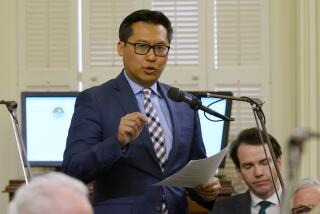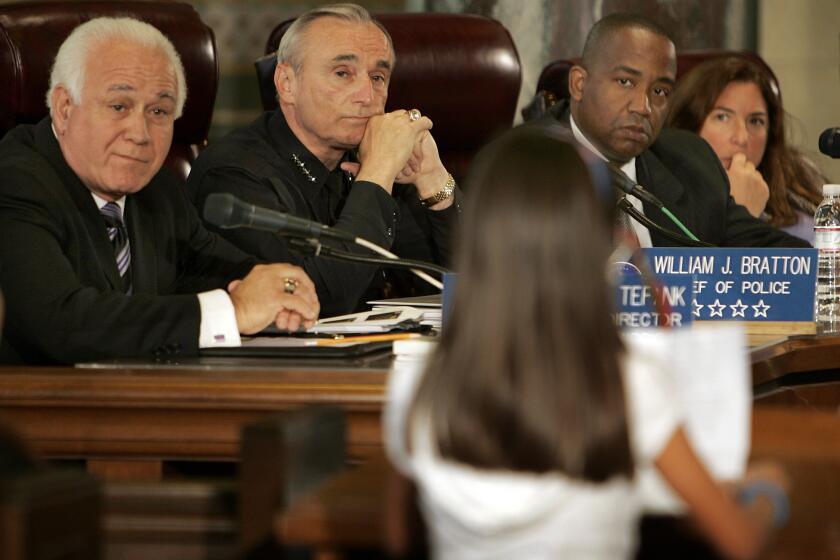Supreme Court could deal California ‘a one-two punch’ on redistricting
In recent years, California voters have backed a series of changes to the state’s elections system to reshape its political landscape. Now, potential upheaval is brewing again, this time from the U.S. Supreme Court.
Next month, the nation’s highest court will rule on a case challenging the legality of independent commissions to draw congressional districts. On Tuesday, the court said it would consider whether state and local voting districts should be based on total population or eligible voters.
Both cases could have enormous implications in California, where voters first approved citizen-led redistricting panels nearly seven years ago and where the state’s burgeoning immigrant population has contoured the political map, regardless of eligibility to vote.
Should the Supreme Court issue rulings overhauling the redistricting process, it would be a “one-two punch to the gut to California,” said Bruce Cain, professor of political science at Stanford University.
California has adopted a “top-two” primary system, altered legislative term limits and created an independent redistricting panel to strip partisanship from the crafting of political maps. All those changes were approved by voters.
“We have now gone through a decade of voters supporting major electoral reforms in order to try to bring our state Legislature and congressional delegation to a place where we feel they’re more responsive and much more functional,” said Kathay Feng, executive director of California Common Cause, an advocacy group that backed such measures.
But that may not stop the Supreme Court — which has shown an eagerness to take on big electoral cases — from upending things.
The fate of the citizen redistricting commission hangs most directly in the balance, pending a decision by the court in June about whether such panels are legally allowed to determine congressional districts.
If the court strikes down independent commissions, it could set off a scramble in the Legislature to redraw California’s congressional map. (Legislative districts, which were also determined by the citizens panel, would not be affected).
Elected officials, legal wonks and advocacy groups “are trying to figure out — for every single permutation — how do we bring stability as quickly as possible in a way that is as close to what we believe the voters’ will is,” said Feng.
The second court case — on how political districts are to be drawn — may have even larger reverberations when it is decided next year.
If the court rules that only citizens who are eligible to vote should be counted to determine districts, it could shift political power away from areas with large Latino populations.
Arturo Vargas, executive director of the National Assn. of Latino Elected and Appointed Officials, said he was “very, very unsettled” about the court’s decision to take up the case.
“To suggest that political representation is entitled to voters only would be a dramatic change in terms of how people are treated,” Vargas said.
The partisan implications of such a decision are murky.
Counting only eligible voters could shift power from urban districts, with large noncitizen populations, to rural ones, which might benefit Republicans, who tend to represent such areas.
But while Democrats represent many of the poor districts that could lose clout, they also hold seats in affluent areas that might gain influence.
Cain, of Stanford, said he’d expect Republicans to pick up a few more seats in the Legislature but would not anticipate a partisan sea change.
“You can’t turn this into a Republican state,” he said.
Twitter: @melmason, @mcgreevy99
More to Read
Start your day right
Sign up for Essential California for news, features and recommendations from the L.A. Times and beyond in your inbox six days a week.
You may occasionally receive promotional content from the Los Angeles Times.








